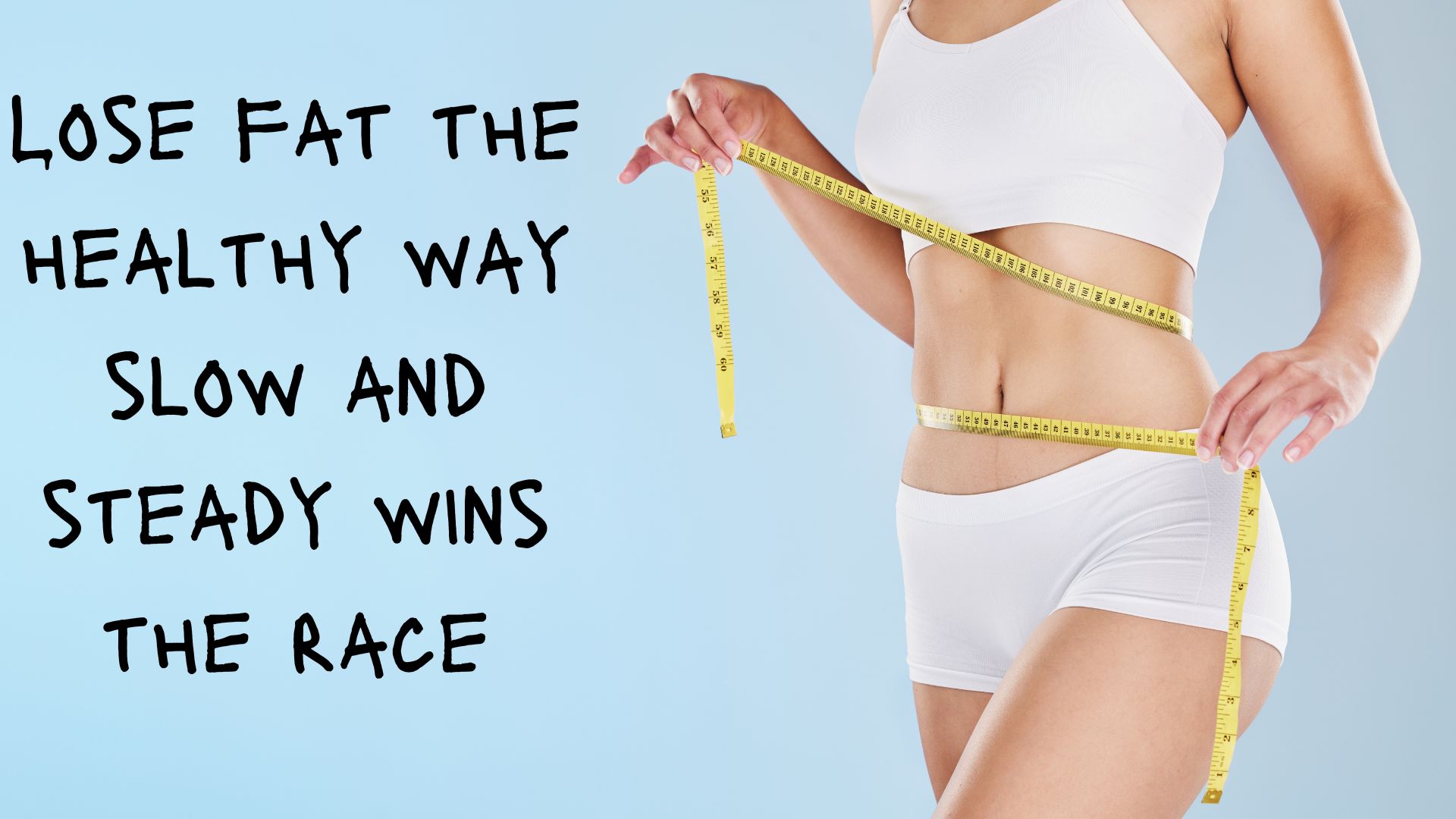Differentiating between weight loss and fat loss
Why make fat loss a priority?
Measuring fat loss and tracking progress

Differentiating between weight loss and fat loss
Losing weight doesn’t necessarily mean losing fat. Losing weight and losing fat are often mixed up, but they are actually two different things.
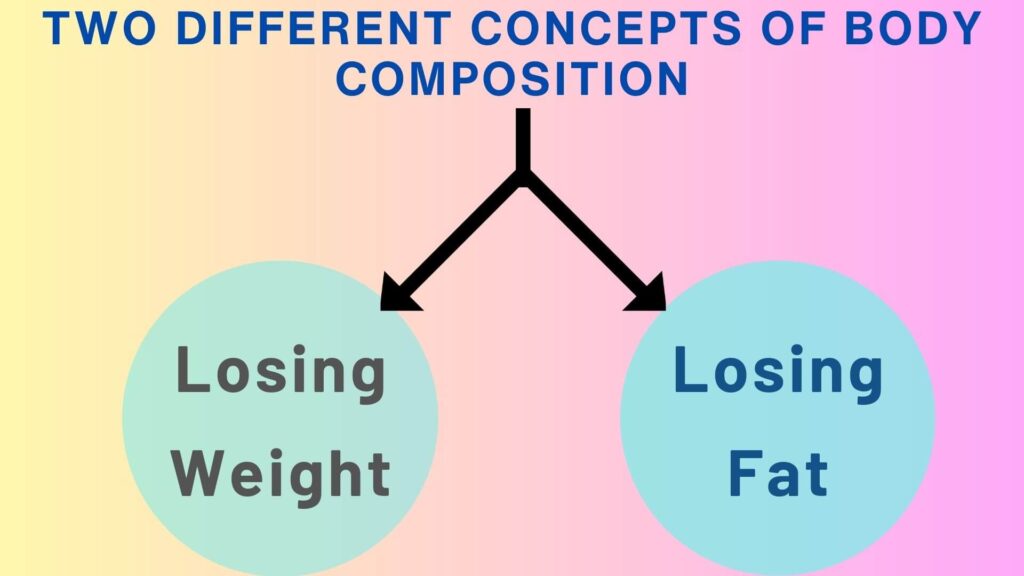
Understanding Body Composition – When we talk about weight loss, we are talking about being lighter on the scale. This decrease can come from decreased body fat, muscle mass, and dehydration. Weight loss reflects the overall weight of the body.
Weight loss = body fat loss + muscle loss + water loss
In contrast, the goal of fat loss is specifically to reduce excess body fat. By focusing on fat loss, you are aiming to eliminate excess body fat rather than losing weight overall.
Fat loss involves reducing or burning stored body fat.
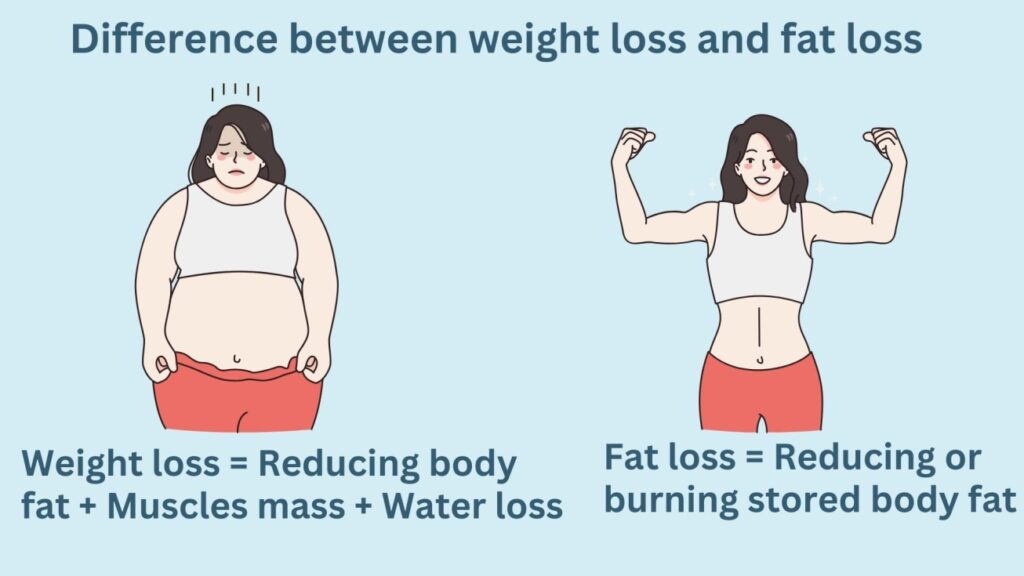
An example to explain:
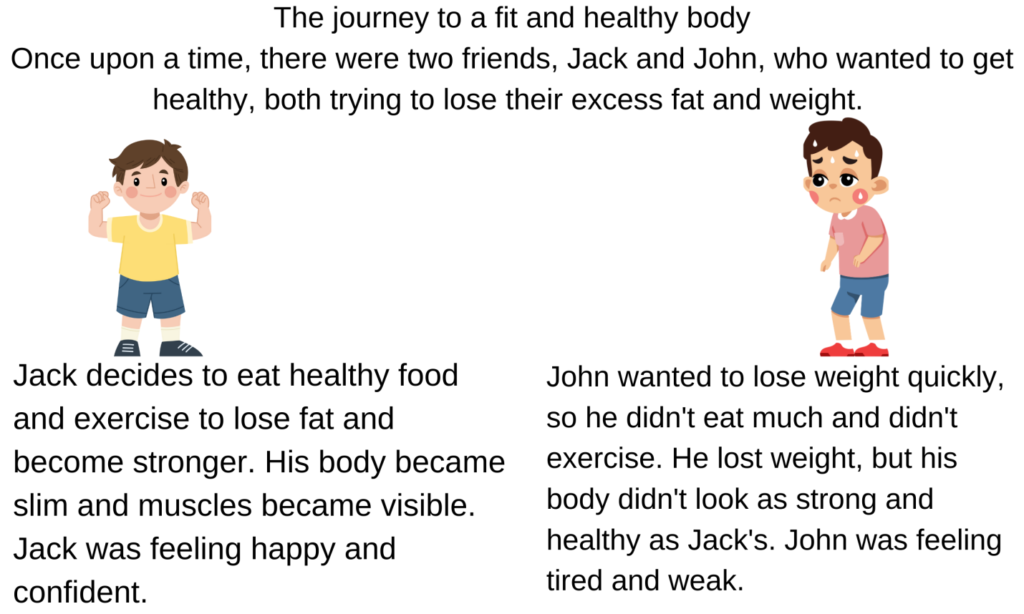
This story highlights the importance of healthy eating and exercise for health. Burning fat while building strength is the key to feeling good and maintaining health. Follow Jack’s example for happiness and health.
Why make fat loss a priority?
Fat loss is beneficial for health as it reduces the risk of chronic conditions and increases stamina, energy levels, mood and overall quality of life. Promoting a healthy body composition includes reducing excess body fat and increasing muscle mass. Below you will easily understand the disadvantages of weight loss and benefits of fat loss.

Above you saw the difference between losing weight and losing fat. To get more clarity, you can find additional examples below.
Another example for clarity:
Consider person A and person B having same height and weight. Person B is healthy due to a balanced diet and regular exercise, while Person A’s unhealthy lifestyle and consumption of processed food makes them less healthy.
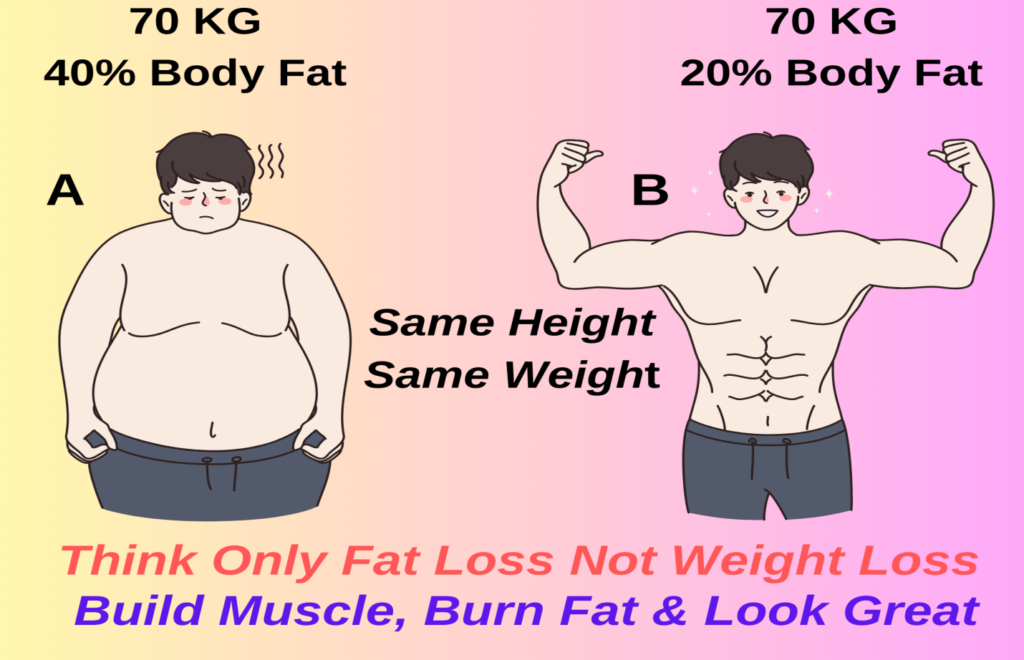
The importance of focusing on fat loss – Focus on fat loss rather than just weight loss as losing weight can lead to muscle loss and overall weakness. When discussing weight loss, the goal should be fat loss, not muscle loss. Keeping our muscles healthy requires nutritious food and regular exercise.

Measuring fat loss and tracking progress
Stay motivated by monitoring progress and setting achievable goals. Celebrate small victories as you get closer to your goals. To accurately track fat loss, measure your body fat percentage. There are three common tools for this purpose:
A) Body Fat Scale – These devices measure both total weight and body fat percentage via a small electrical signal. However, simply stepping on the scale does not tell how much of your weight is fat, muscle or bone. This is useful for total weight, but additional measurements are needed for better information.

B) Skinfold Calipers – These handheld instruments measure skinfold thickness at various points on the body. They are more accurate than scales but require practice.


C) Tape measure – An inexpensive device for measuring the circumference of body parts such as the waist. Although it is not as accurate as other methods, it is a helpful way to track changes over time.

In conclusion
Weight loss and fat loss are different. Weight loss can bring massive amounts of happiness, but losing fat is what really promotes health and fitness. Eating well, exercising, and making lifestyle adjustments can help you lose belly fat and feel stronger. For a healthier, happier and more confident life, prioritize fat loss and not just weight loss.



